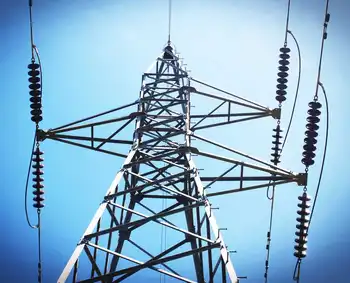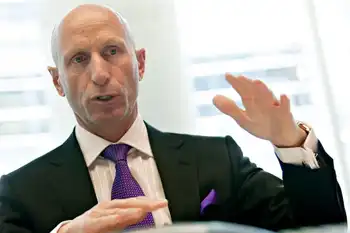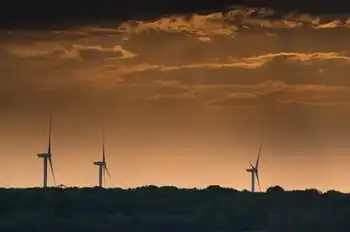Turning streetlight grids into a communications network
By Business Wire
CSA Z462 Arc Flash Training - Electrical Safety Essentials
Our customized live online or in‑person group training can be delivered to your staff at your location.

- Live Online
- 6 hours Instructor-led
- Group Training Available
Sunrise TechnologiesÂ’ new BrownBetty system creates a mesh network for communications between ground-based sensor and control devices and the Internet, utilizing EmberÂ’s ZigBee wireless network technology. By taking advantage of the existing streetlight infrastructure with its high elevation poles and clean line of sight, BrownBetty dramatically lowers the cost of backhaul communications while enabling applications that were previously not practical or affordable.
For utilities, these could include automatic meter reading (AMR), time-of-use metering (TOU), advanced metering infrastructure (AMI), remote water meter reading, remote electric meter disconnect, fault indication, distribution automation, and utility GPS mapping.
Other applications include Homeland Security sensor monitoring, peak period load shedding (air conditioners, water heaters, pool pumps, etc.), vehicle tracking, bridge stress monitoring, advanced parking meters (APM), storm drain blockage monitoring, water flow monitoring, home/business heating oil tank monitoring, and bridge stress monitoring, among many others.
The system gets its curious name from Brown Betty, the horse used by Paul Revere in his famous ride to alert the Minuteman in Lexington and Concord of the British ArmyÂ’s approach.
“BrownBetty makes smart use of ZigBee to eliminate the need for expensive long haul communications options like cellular, pagers or powerline,” said Bob Gohn, Ember’s Vice President of Marketing. “Because it uses standard based communications, BrownBetty can network work with any other ZigBee enabled devices to form a reliable and robust network.”
Inexpensive communication nodes are plugged into a streetlightÂ’s standard NEMA twist lock receptacles, replacing the lightÂ’s dusk to dawn photocontrols. Thanks to ZigBeeÂ’s self-forming network capabilities, the nodes automatically install themselves into the BrownBetty network, resulting in minimal installation costs. This local network communicates with a network computer operating center through bridge nodes which connect to the internet via fiber, broadband or WiFi connections. A single low cost node can communicate with multiple houses with multiple applications. Each node incorporates a photo control circuit to provide normal dusk to dawn lighting control of the streetlight.
Sunrise Technologies partnered with muNet, a provider of IP and ZigBee-based electric meter interfaces, in a successful pilot of the BrownBetty system at the Taunton Municipal Light Plant (TMLP) in Taunton, Mass. “The system is great because you can start inexpensively on a small scale and expand coverage and add on additional applications when you want them. It makes so many things more efficient,” said Mike Horrigan, General Manager for TMLP. Other participants in the project included NightHawk to perform remote electric meter disconnect/reconnect, DataMatic remote water meter reading, Graphic Technologies, Inc. (GTI) to provide geospatial data, and Power Delivery Products, Inc. for its faulted circuit indicators.
Vance Spillman, Vice President and General Manager of Sunrise Technologies said, “BrownBetty was created to fill the void of cost effective wide area coverage for backhaul of ZigBee device information to the Internet,” he said. “Smart grid implementation becomes instantly affordable. Adding the BrownBetty communications layer to Municipal WiFi systems makes the WiFi technology more useful. It adds value to the WiFi network and makes the WiFi network much more financially viable.”
The BrownBetty system used Ember’s EM250 ZigBee “system-on-chip” transceiver and EmberZNet PRO wireless mesh networking software. Sunrise Technologies realizes that Ember’s ZigBee technology addresses the need for a cost-effective, standards-based wireless networking solution that supports low data-rates, low-power consumption, security and reliability.











